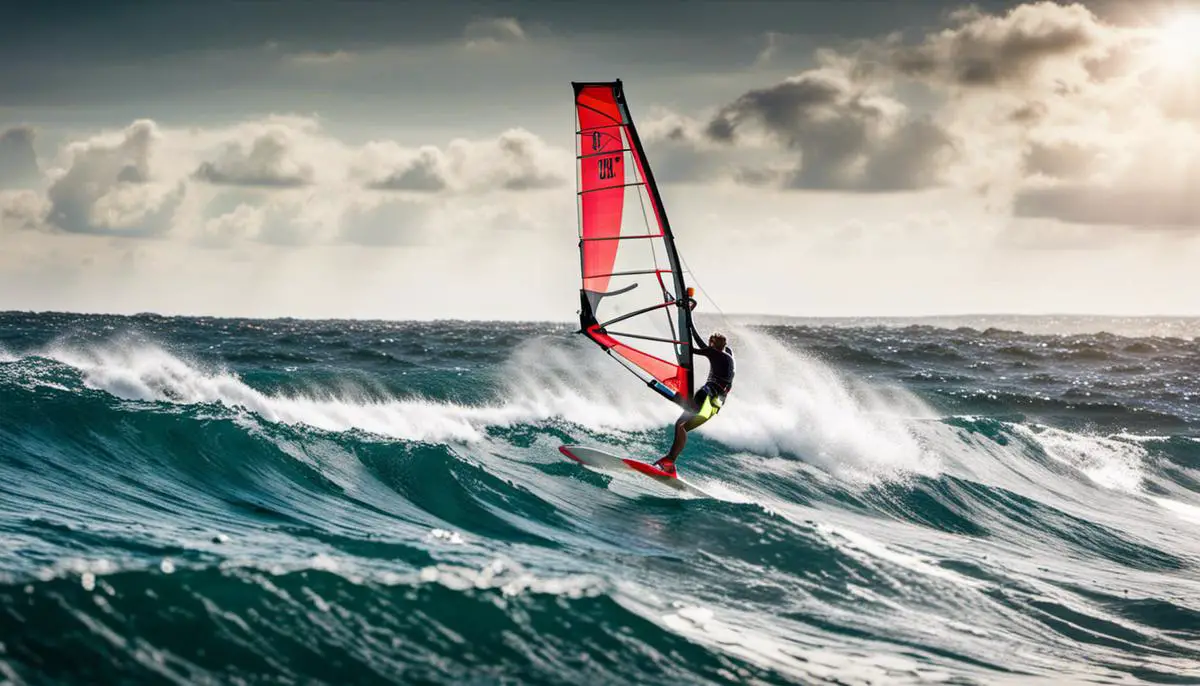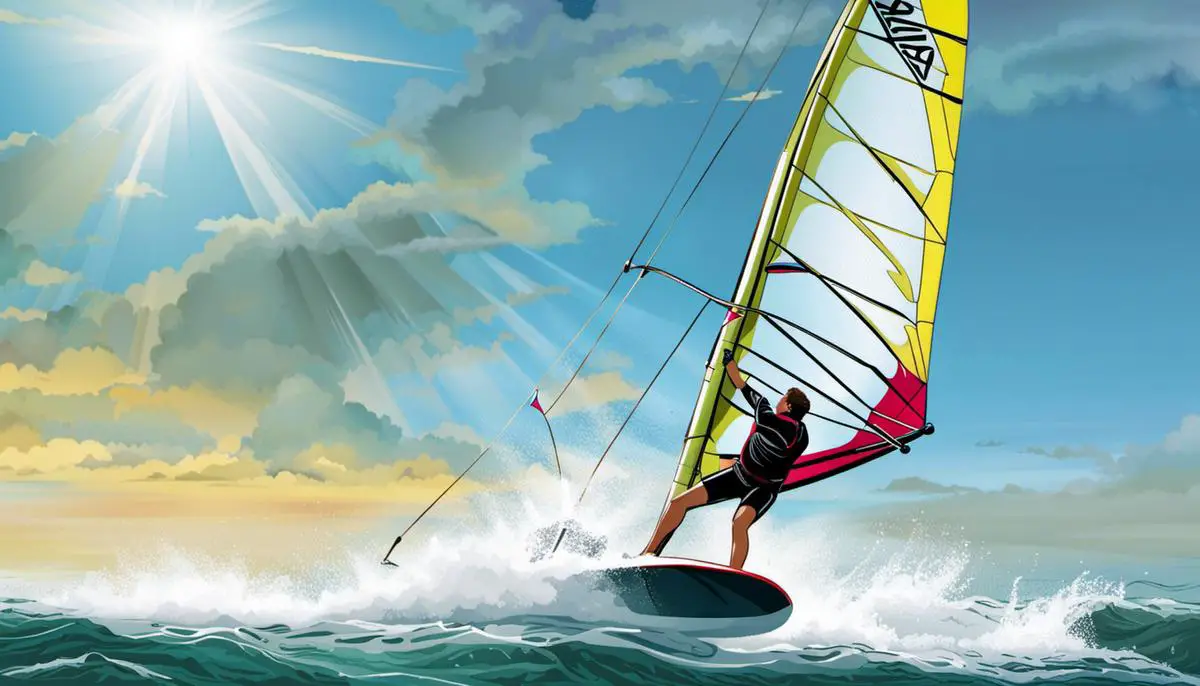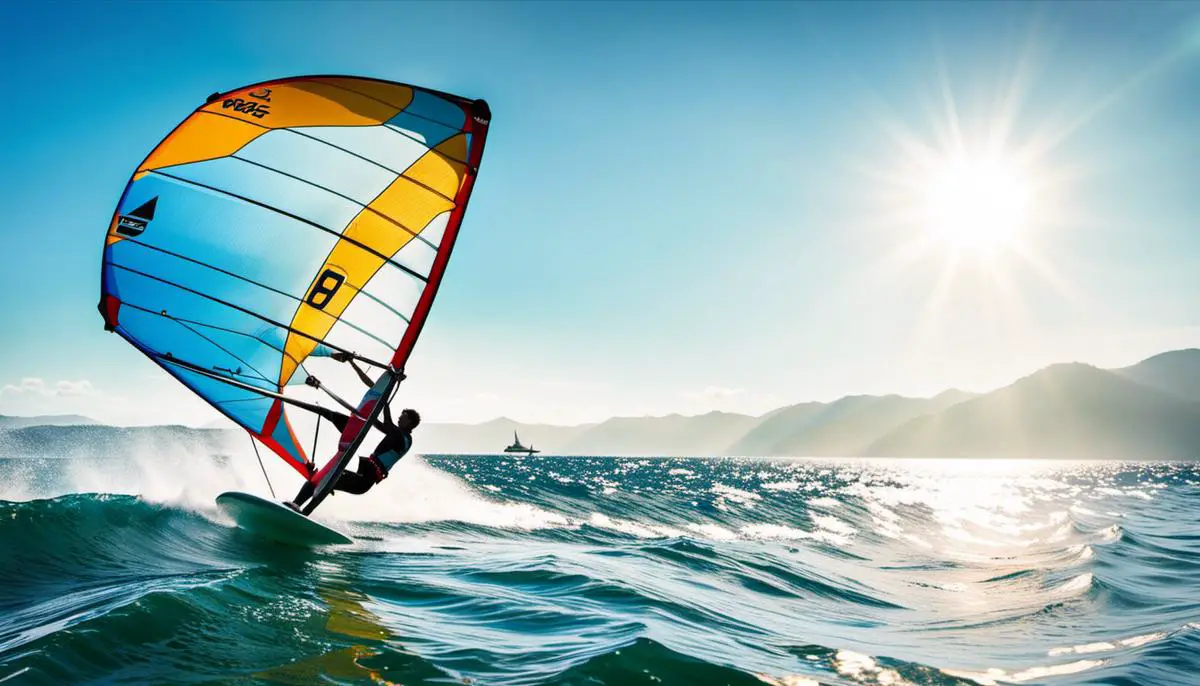Imagine harnessing the power of the wind to glide across the water, feeling the exhilaration as you balance on the board and control the sail. This thrilling experience awaits you in the sport of windsurfing, a unique blend of surfing and sailing that offers a captivating adventure. Whether you’re a newcomer or simply want to enhance your skills, diving into the world of windsurfing is an exciting journey. This guide will engage you in understanding the fundamentals of the sport, mastering balance on the board, advancing your sail handling, and preparing you for practical training and improvement. So, let’s set sail on this exhilarating journey to becoming an accomplished wind surfer.
Understanding Wind Surfing
Wind surfing, also known as sailboarding or boardsailing, is a combination of sailing and surfing. It emerged as a popular water sport in the late 1960s in Pennsylvania, USA, further evolving in the UK and Europe in the mid-1970s. Utilizing the force of the wind and the balance of the surfer, it poses an enticing chance to voyage across the water surface, as well as to perform various acrobatic maneuvers.
Wind surfing equipment centers around the sailing board: a composite board about 2 to 3 meters long, fitted with a movable mast that holds a controllable sail of 2 to 6 square meters. The surfer stands upright on the board, holds onto a boom to control the sail, and uses their body to counterbalance the force of the wind. The board has a fin, also known as a skeg, underneath to help with directional stability. Wetsuits and life vests are worn for protection and safety.
Some common terminologies include “tacking” and “gybing”, maneuvers involved in changing the board’s direction. “Planing” is a term used when the board gains speed and glides on the water surface, while “upwind” and “downwind” are used to describe the board’s position relative to the wind direction. “Leeward” is the direction towards which the wind is blowing, and “windward” is the direction from which the wind is blowing.
Physics plays a significant role in wind surfing. Wind, force, and balance are integral factors. The wind exerts a force on the sail, which is balanced by the rider’s weight and the board’s drag on the water. As the wind increases, it forces the sail to lean, requiring the rider to adjust their stance and grip on the boom to remain balanced. A good comprehension of these dynamics aids in mastering the sport.
Optimum wind surfing conditions are typically winds of 10 to 25 knots. Beginners are suggested to start with winds less than 15 knots and upgrade gradually as confidence builds. Surfers should always be aware of changing weather conditions, and also ensure they are capable of swimming back to shore in case of equipment failure. Lastly, understanding right-of-way rules, using a board leash, and avoiding crowded areas can significantly increase safety on the water. Remember, regardless of your surfing skills, safety should always be the top priority.

Learning to Balance on the Board
Understanding the Basics
To become comfortable with windsurfing, you’ll first need to familiarize yourself with the board and how it responds to wind and water. Start by standing upon the board without the sail, gradually adjusting to the shifting equilibrium. Notice how the board tends to rock back and forth. It’ll feel unstable and exhilarating all at once, but don’t let that deter you. Keep your ankles soft and your knees slightly bent to help maintain balance, just as you would if skiing or snowboarding. Feel the sensation of the water beneath the board, gauging how it shifts your weight.
Stance and Foot Placement
Foot placement might seem like a minor detail but it is vital for maintaining balance. Initially, your feet should be shoulder-width apart, placed approximately in the middle of the board. This gives you a solid base. Let your body flow with the rhythm of the board and wind, not against it. Practice shifting your body weight side-to-side and front-to-back, and study how each movement alters the board’s position. Over time, instinctively understanding these nuances will make your foray into windsurfing a smoother endeavor.
Starting Small
Once you have built confidence on the board, it’s time to test waters, or in this case, the waves. Begin in shallower, calmer waters where waves are small and manageable. Go out frequently. The more time you spend on the board in the water, the more skilled you’ll become at managing movement. Moreover, familiarize yourself with different wind conditions. Watch how the wind interacts with the water and the board, and learn to compensate for its shifts.
Gradually Increasing the Challenge
As you solidify your skills in incremental stages, gradually move to areas with bigger waves for a more challenging session. Conquer your fear of falling into the water, because sometimes, it’s necessary for growth. Each fall brings a new learning opportunity to improve your windsurfing skills. Along with stronger winds and larger waves comes the thrill and exhilaration that windsurfing promises. Remember to wear protective gear and have a spotter when progressing to higher waves or stronger winds. With practice, patience and persistence, you will eventually master the art of windsurfing.

Mastering Sail Handling and Maneuvering
Understanding the Wind and Sail Connection
Mastering sail handling necessitates comprehending the interaction between wind and sail. Always keep an eye on the telltales, small pieces of yarn or ribbon that are attached to both sides of the sail. They provide real-time feedback about the airflow over the sails. When the telltales stream back evenly, that means your sail is correctly trimmed.
Operating the Sail
To control the sail, get a firm grasp on the boom, the horizontal pole that extends from the bottom of the mast. The boom helps you maneuver the sail and moves in tandem with the sail. Forcefully pull on the boom to position the sail close to the board when you want to go upwind. Conversely, let it out gradually when you’re looking to sail downwind. Always remember to keep your hands closer together for better equilibrium while handling the sail.
Tacking Maneuvers
Start with simpler maneuvers like tacking, wherein you change the direction of the sailboat by moving the bow of the board through the wind. Start by steering the board into the wind by pulling the sail inwards. Once the nose of the board is facing the wind, quickly switch your position on the board while turning the sail to the opposite side.
Mastering the Gybe Maneuver
Gybing is another fundamental skill that involves turning the board’s stern through the wind, altering your sailing direction. This move is a bit more complex than tacking. Begin by steering your sailing board downwind. Next, shift your weight to the back of the board while simultaneously moving the sail slowly to the side. As the board turns, switch your body position accordingly and bring the sail swiftly to the other side, ensuring yourself not to fall into the water.
The Path to Advanced Maneuvers
Once you’re comfortable with basic sail handling and maneuvers like tacking and gybing, you can start refining and learning more advanced skills such as planing, jumping, and wave riding. These advanced moves require essential pre-requisites like strong balance, full sail control, understanding wind condition, and diving or easing techniques, to name a few.
Tips for Success
Always keep your body relaxed and flexible. Maintaining a correct posture is as crucial as handling the sail. Stay close to the board’s center line, and ensure you’re on the windward side when uphauling. Always make sure your equipment is maintained and is suitable for your skill level and wind conditions.
With continued practice and dedication, making advanced moves will become second nature. As in many sports, progression in windsurfing comes with time and plenty of water hours. Happy windsurfing!

Practical Training and Improvement
Setting The Stage
Putting up the windsurfing sail may seem complicated at first, but is rather straightforward once you get the hang of it. First, insert your mast foot into the mast track on your board. Next, insert the mast into the luff tube of your sail. Lastly, slide your boom onto the mast and tighten everything up. Your sail is now ready for the water.
Mastering The Basics
Attempting to rush into complex moves before you’re ready will only lead to frustration. Instead, begin with the foundational skills. Learn to balance on the board on calm, still water, then progress to soft winds. Focus on getting comfortable standing on the board and using the sail to propel yourself forward.
Harnessing the Wind
The essence of windsurfing lies in knowing how to harness the power of the wind. Feel the pull of the sail, how it changes with shifts in the wind. Pull the sail towards you to catch more wind and lean back against its force. Pivot your hips and shoulders in the direction you wish to go and let the wind do the work.
Turning and Tacking
As your confidence and skills grow, so will your desire to execute more complicated maneuvers. The basic turn, or tack, is an essential skill where you switch the sail from one side of the board to the other. Start by slowly pushing the mast forward and around until the sail flips sides. The board will naturally follow and you will change direction.
Handling Weather and Sea Conditions
Paying close attention to weather and sea conditions is vital for safe windsurfing. Wind speed and direction significantly impact your ability to control the board and sail. Additionally, understanding how waves, currents, and tides affect your movement will help you navigate the sea with confidence.
Continual Training and Improvement
The key to mastering windsurfing is consistent practice and patience. Time on the water will allow you to better understand the interplay between the wind, sea, your board, and sail. Use each outing to focus on specific weaknesses and to test and expand your skillset. Consider taking lessons or joining a local windsurfing community to learn from more experienced surfers.
Safety
Remember, safety should always be your top priority. Always windsurf with a buddy, notify someone on shore of your plans, and understand the local regulations and weather before setting out. Always wear a Personal Flotation Device (PFD) and consider wearing a helmet, especially while learning or in rough conditions.

As we journey through the world of windsurfing, we’ve dove into its origins, equipment, and terminologies, gaining insights into the physics and safety procedures of the sport. We’ve harnessed the understanding of balancing on the board, sailing, maneuvering the sail, and reacting to different wind and sea conditions. But remember, the key to mastering this enlivening sport ultimately lies in actual practice. So, go out there! Feel the wind and the water, fall, stand up, and glide again. Each wave, each gust of wind, will take you one step closer in this windsurfing adventure. Remember, the sea awaits your command, so grab your sail and board and take charge!

